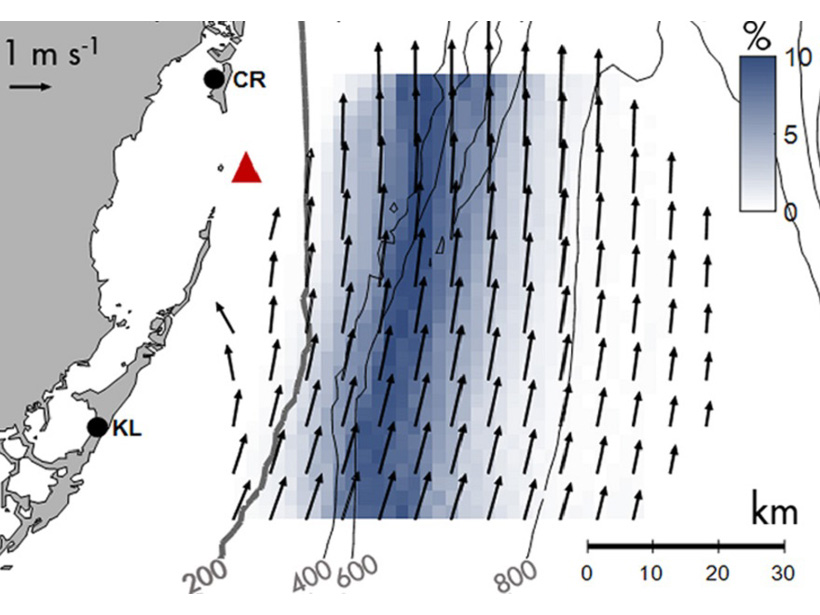Source: Geophysical Research Letters
Western Boundary Currents (WBCs) are highly variable, swift-flowing jets accompanied by narrow recirculation gyres and energetic eddy fields that are found in the subtropical gyres of all the ocean basins. WBCs are important conveyors of mass and properties from the tropics to the subtropical latitudes and their warm currents influence the coupled air-sea system. Archer et al. [2018] find the mean surface currents of different WBC systems in the North Atlantic and South Pacific to be remarkably similar when viewed in a jet-centric reference frame. This is surprising given the different wind forcing, bathymetry and energetic meandering and eddy fields found in each system. There is little seasonal variability in the smallest scale eddy energetics, which hints they are most likely related to topographic or eddy frontal interactions that have no seasonal cycle. These results provide a new view of WBCs and will be helpful for evaluating higher resolution numerical models to better understand mechanisms of variability in WBCs.
Citation: Archer, M. R., Keating, S. R., Roughan, M., Johns, W. E., Lumpkin, R., Beron‐Vera, F. J., & Shay, L. K. [2018]. The kinematic similarity of two western boundary currents revealed by sustained high‐resolution observations. Geophysical Research Letters, 45. https://doi.org/10.1029/2018GL078429
—Janet Sprintall, Editor, GRL
Text © 2018. The authors. CC BY-NC-ND 3.0
Except where otherwise noted, images are subject to copyright. Any reuse without express permission from the copyright owner is prohibited.

